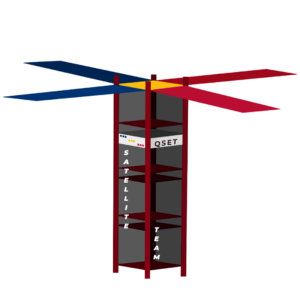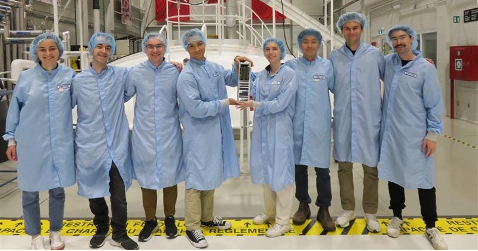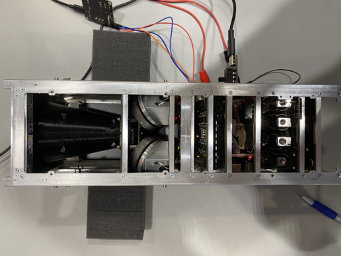SATELLITE

The Satellite team (QSAT) develops a 3U CubeSat to compete in the Canadian Satellite Design Challenge alongside other Canadian Universities with the aim of launching a satellite into space! The team has just finished its 2021-2023 competition cycle, finishing in third place and winning the outreach award. QSAT is aiming to compete in the CUBICS 2025 program with the Canadian Space Agency.
The team consists of 6 sub-teams: Communications, Electrical Power System (EPS), Attitude Determination & Control System (ADCS), Mechanical, and Payload which together form a functional satellite. Projects are often multidisciplinary and sub-teams consist of students from all programs and backgrounds. QSAT also runs the Space School program, aimed at first years, to provide students with the essential skills and knowledge needed to start designing satellites. New team members are welcome to join the team directly or via Space School.
Space School
The fifth annual offering of Space School will be run during the 2023-2024 academic year and is open to all students interested in joining the QSET Satellite team. The program is geared towards first years but interested students in any year or program are welcome to join. Through weekly sessions, students will have the chance to build a small experiment designed to go to space—with the possibility to launch into the stratosphere on a high-altitude balloon! Skills learned include GitHub, working with Arduinos, basic circuits, soldering, PCB design, CAD & 3D printing, and space environment design. Space School is run by senior QSAT team members in collaboration with Thomas Sears, a Queen’s PhD student with CubeSat industry experience.
Sub-Teams
ATTITUDE DETERMINATION & CONTROL SYSTEM (ADCS)
The Attitude Determination and Control System (ADCS) determines and controls the satellite’s orientation in space. The system includes a wide array of sensors and actuators, such as an inertial measurement unit with a gyroscope, accelerometer, and magnetometer, photodiode based coarse angle sun sensors, EC motor reaction wheels, and a magnetorquer.
COMMUNICATIONS SYSTEM
ONBOARD COMPUTER (OBC) SYSTEM
The Onboard Computer (OBC) is the main computer and network that manages all the other subsystems on the QSET Satellite. The system involves working with microprocessors, memory banks, and interfacing chips to build and connect the computer to other sub-systems to perform the necessary tasks of the satellite.
ELECTRICAL POWER (EPS) SYSTEM
MECHANICAL SYSTEM
PAYLOAD SYSTEM
The Payload is the primary reason for the satellite to go to space. All other subsystems exist to support the payload in performing its mission. Past missions include an earth observation mission where the primary payload is a custom camera system to take a low-resolution picture of Earth. The payload team is currently working to redesign their payload for the CUBICS 2025 project.


